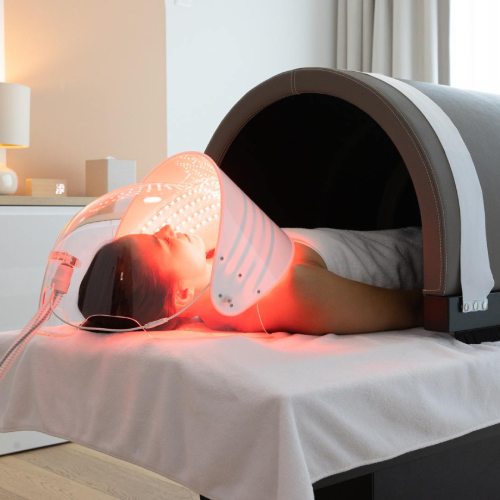Intimate sphere treatments – Aesthetic and regenerative gynecology
Intimate dryness
What is intimate dryness?
Intimate dryness refers to a feeling of dryness, irritation, burning or discomfort in the vulva and vaginal area in women. This condition is also known as atrophic vaginitis or postmenopausal vaginitis, and is often caused by a drop in estrogen levels in women after menopause. This dryness can also occur in women due to allergies, infections, hormonal changes, pregnancies and also for women who have had certain diseases such as cancer, due to chimiotherapy.
How to improve intimate comfort through aesthetic medicine?
There are several treatments to relieve intimate dryness and improve vaginal health in women, including the use of:
Volume Filling
What is volume filling?
Intimacy volume filler is an aesthetic procedure that aims to restore volume to the labia majora – the tissues of the intimate sphere in women. This procedure is also known as labial fillers or labiaplasty. Labia majora volume filling is often performed on women who have lost volume or elasticity in the vulvar region due to age, pregnancy, childbirth or other factors. This loss of volume can cause the vaginal lips to look loose, wrinkled or saggy and can also cause discomfort or pain during physical activity or sexual intercourse.
What techniques in aesthetic medicine can be used to fill volumes?
Laxity:
What is laxity?
Laxity is a term used to describe a loosening or loss of elasticity in body tissues. In the context of the intimate sphere, laxity refers to a loosening of the vaginal muscles or surrounding tissues that can lead to a decrease in sexual sensation and pleasure as well as a loss of tone and bladder control.
Laxity can be caused by a variety of factors such as pregnancy, childbirth, aging, significant weight loss or obesity. When a woman gives birth vaginally, the muscles and tissues in the vulvar area can stretch and weaken, resulting in a loss of muscle tone and elasticity. This can also cause urinary incontinence and feelings of heaviness or pressure in the pelvic area.
What aesthetic medicine techniques can be used to improve laxity?
There are several treatments to improve laxity and urinary incontinence such as
Vulva restoration:
What is vulva restoration?
Vulva restoration is a procedure that aims to restore the appearance and function of structures in the vulvar region in women.
What techniques in aesthetic medicine can be used to restore the vulva?
› Nrose Protocol: 4 Sectum sessions, the first with hyaluronic acid injection, Rejuvenation Rose Gel to be applied for 3 months.
Intimacy Hyperpigmentation
What is hyperpigmentation?
Hyperpigmentation describes a condition where certain parts of the skin are darker than the rest of the skin. This condition is partially caused by an excessive production of melanin, the pigment that gives the skin its color. Hyperpigmentation can be caused by a variety of factors, including sun exposure, aging, hormonal imbalances, injury or scarring. In some cases, it can also be hereditary.
What techniques in aesthetic medicine can be used to improve hyperpigmentation?











